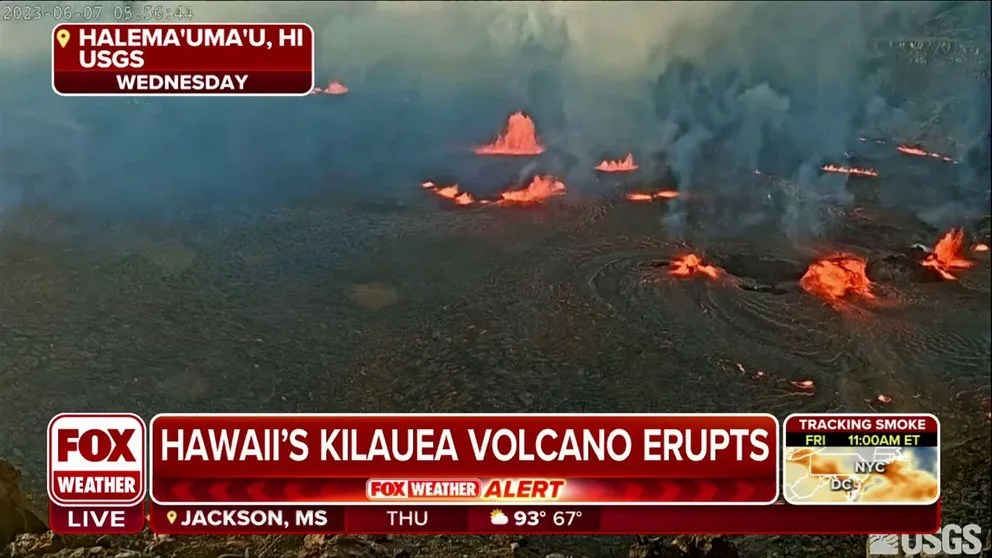What is vog?
The term is a mashup of 'volcanic smog' and leaves a milky haze. And much like smog, vog leaves a milky haze causing air quality and respiratory issues.
Hawaii's Kilauea volcano continues erupting for second time this year
Geologists continue to monitor the latest eruption of Kilauea after it began spewing lava on June 7. The volcano in Hawaii's Volcano National Park is sending volcanic smog or vog downwind.
HILO, Hawaii – Aside from ash plumes, bubbling lava and even dealing with possible accumulations of "Pele's Hair," Hawaiian volcanoes can bring another wrinkle to the islands: vog.
The term sounds like a mashup of "volcanic fog," Instead, it's a mashup of "volcanic smog." And much like smog, vog leaves a milky haze causing air quality and respiratory issues.
WHAT MAKES ‘PELE’S HAIR' DURING A VOLCANIC ERUPTION?
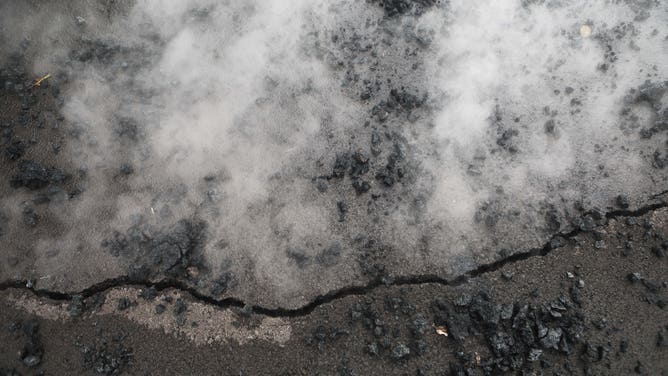
PAHOA, HI - MAY 10: Steam and gas rise from a volcanic crack in a roadway in Leilani Estates in the aftermath of the Kilauea volcano eruption on Hawaii's Big Island on May 10, 2018 in Pahoa, Hawaii.
(Mario Tama / Getty Images)
Vog is a mixture of water vapor, carbon dioxide and sulfur dioxide. It's the sulfur dioxide emitted from volcanic fissures that react with oxygen, sunlight and moisture, among other airborne particles and gases, to convert into a haze of fine particles, according to Hawaii's Department of Health.
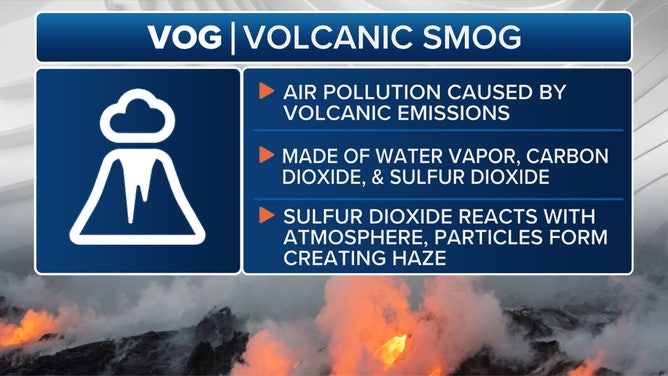
(FOX Weather)
In this sense, it also behaves like wildfire smoke, scattering sunlight and leaving a haze. Unlike fog and wildfires, vog can have a distinctive and acrid smell, such as fireworks or a burning match, the DOH says.
ERUPTION OF HAWAII’S MAUNA LOA VOLCANO SENDS LAVA SHOOTING HUNDREDS OF FEET INTO THE AIR
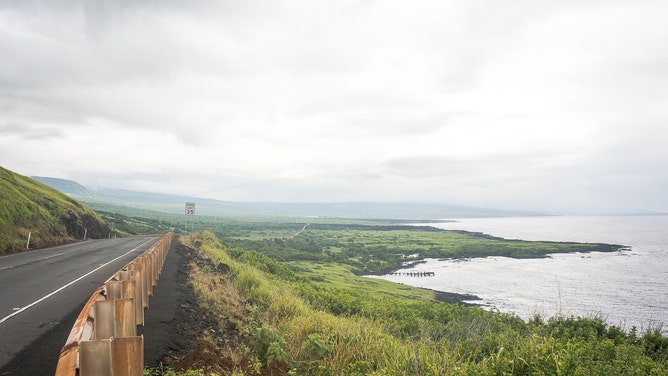
Vog from Kilauea's volcano explosions.
(RONIT FAHL / AFP / Getty Images)
But the tiny particles in vog can cause respiratory irritations, especially for those who have health conditions or are sensitive to poor air quality.
Vog blows downwind from the volcanoes, with the southwest side of Hawaii's Big Island a typical place to see vog during the summer northeasterly trade winds from ongoing eruptions of Mount Kilauea and now Mauna Loa. But in the winter, when trade winds abate, vog can spread to the eastern side of the Big Island or even across the rest of the islands, according to the USGS.
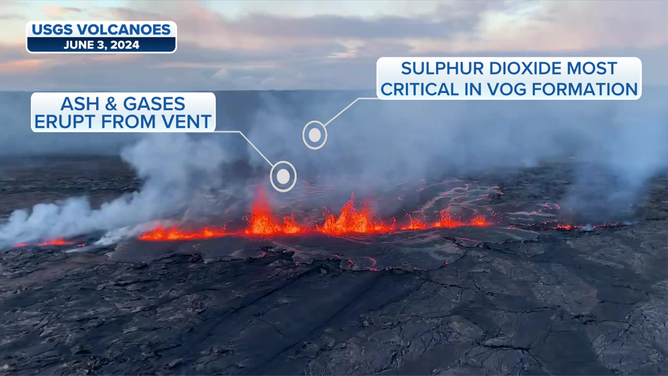
(FOX Weather)
Health officials suggest staying indoors during vog events and limiting air intrusions into your home.
